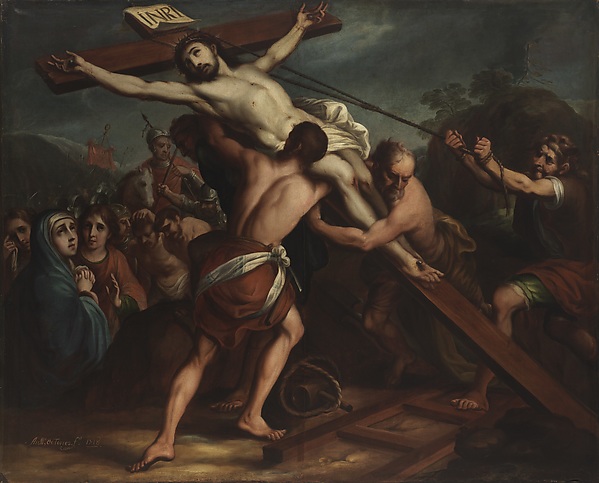
Beyond Diego and Frida
A new exhibition at the Metroplitan Museum of Art focuses on Mexican colonial art.
While the interest for contemporary artists of Hispanic origin has been gaining ground in the American artistic scene, Latin American colonial art has always been the great forgotten.
In an effort to make an exercise of historical review and raise the value of art that occurred in America after the colonization of the Spanish, the Metropolitan Museum of New York has just opened an exhibition on Mexican art of the century XVIII: "Painted in Mexico. 1700-1790", an exhibition where portraits and works of great masters are mixed with pieces of religious art, and "casta paintings" , and making evidence of a growing interest in the Latin American artistic production beyond contemporary art, avant-garde and modernity.
“Those days when the only Latin American artists remembered were Frida and Diego are away", observed Spanish newspaper El País last weekend.
Before touring to New York, the exhibition - which presents more than 100 works by 24 artists and involved six years of field research in more than 30 cities in the US, Mexico and Europe - was previously exhibited at the Los Angeles County Museum of Art (Lacma).
"Simple demographics is one reason for Lacma’s, Metropolitan and other US museums’ growing interest in colonial Latin American art", reported the Art Newspaper. "The Hispanic population of Los Angeles county reached 48% in the 2010 US census. Latinos are the largest minority group in the US, and one of the fastest growing."
During the first century after the conquest of Mexico, artists from Europe—mainly immigrants from Spain—met the growing demand for images of all types, both religious and secular. Some of these artists established family workshops in Mexico that endured for generations, as reported in the Metropolitan Press release.
By the middle of the 17th century, artists born and trained in Mexico, responding to the mounting needs of both individual and institutional patrons, had risen to prominence and developed pictorial styles that reflected the changing cultural climate.
RELATED CONTENT
The 18th century ushered in a period of artistic splendor, as local schools of painting were consolidated, new iconographies were invented, and artists began to organize themselves into academies. Attesting to the artists’ extraordinary versatility, painters whose monumental works cover the walls of chapels, sacristies, choirs, and university halls were often the same ones who produced portraits, devotional images, folding screens and casta paintings (depictions of racially mixed families).
The New York Times highlighted the importance of casta paintings, which "provided a kind of DNA profile of a colonial society built on the intermingling of ethnic bloodlines, European, Indian and African. On the the other hand, this genre also suggested how, through socio-economic ranking by race, European power could be maintained. By colonial law, for example, a woman with ‘‘black blood” was banned from wearing European-style clothing,", as reported in The New York Times.
The growing professional self-awareness of artists during the period led many educated painters not only to sign their works to emphasize their authorship but also to make explicit reference to Mexico as their place of origin through the Latin phrase pinxit Mexici (painted in Mexico). This expression eloquently encapsulates the painters’ pride in their own tradition and their connection to larger, transatlantic trends, reported the curators of the exhibition.
One of the best examples of prolific Mexican artists from the eighteenth century are the brothers Juan and Nicolás Rodríguez Juárez, who descended from a prominent dynasty of painters. They were the leading artists of the day, around whom others congregated.Through an academic approach to learning based on copying and drawing, and aided by the arrival of many new prints and paintings from Europe, these artists and their contemporaries perfected their compositional skills. They refined their depiction of space and architecture and paid increasing attention to the anatomical correctness of figures by employing live models.
Before touring to New York, the exhibition was exhibited at the Los Angeles County Museum of Art (Lacma).
"Simple demographics is one reason for Lacma’s, Metropolitan and other US museums’ growing interest in colonial Latin American art", reported the Art Newspaper. "The Hispanic population of Los Angeles county reached 48% in the 2010 US census. Latinos are the largest minority group in the US, and one of the fastest growing."











LEAVE A COMMENT:
Join the discussion! Leave a comment.